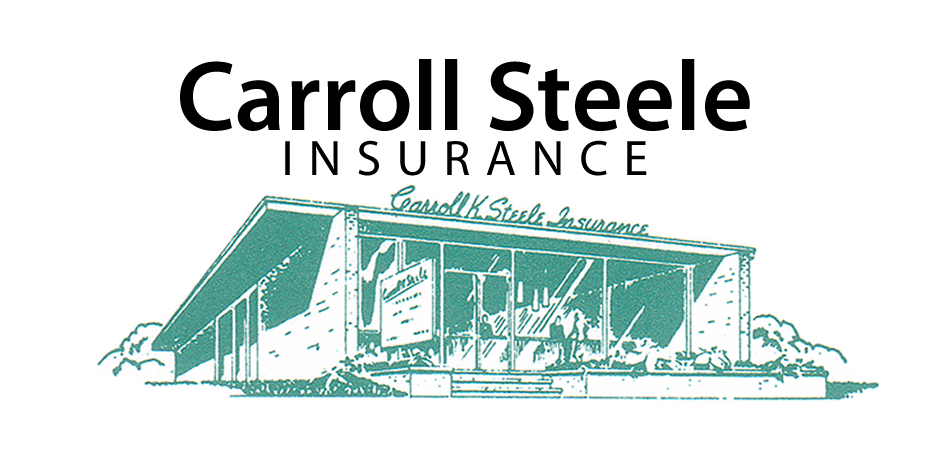Long Term Care Insurance
What it is and what you need to know to get started
With trying to save for retirement, kids college tuition and paying the mortgage Long Term Care (LTC) insurance is just another item on the list most people know is important, but just don’t want to think about. However, we spend more than half our lives working and trying to build wealth. If you or your significant other where to become ill at an earlier age during retirement that collected wealth could be in jeopardy of being decimated within only a few years. What about Medicare? The biggest you could make is to rely on Medicare to cover your long-term care expenses. In fact, it covers very little, extremely limited and doesn’t provide financial support for the numerous tasks you do on a daily basis, but might not be able to because of an injury or sickness.
So what is Long Term Care Insurance? Simply, long-term care is the assistance or supervision you may need when you are not able to do some of the basic “activities of daily living” (ADLs) like bathing, dressing or moving from a bed to a chair. You might need assistance with ADLs if you suffer from an injury like a broken hip, an illness, a stroke or from advanced age and frailty. Other people may need long-term care because of mental deterioration, called “cognitive impairment” that can be caused by Alzheimer’s Disease, other mental illness or brain disorders. Let me quickly note here that many times you can’t purchase long-term care coverage after you have been diagnosed with a disease such as Alzheimers- so it’s even more important to think about getting long-term care insurance earlier than later. The following provides some additional information about long-term care and types of insurance coverage you can buy. For additional information visit your state government website. For Massachusetts residents you can find a very helpful resource on long-term care at Massachusetts Department of Insurance website.
Long Term Care – The Basics
Sometimes called ‘custodial care’ or ‘personal care’ long term care (the kind of care paid out-of-pocket if you do not have a private LTC coverage) is most often provided by professional skilled and unskilled workers. Unskilled workers are often supervised by skilled medical personnel such as registered nurses. Informal long-term care is frequently provided by unpaid family members and friends. Long-term care services can be provided in your own home or in a community program like an Adult Day Care Center, in an assisted living facility licensed as a Residential Care Facility for the Elderly (RCFE), or in a nursing home. Long-term care is not necessarily “long term.” For instance, about half of all nursing home stays last 6 months or less. Some people only need long-term care for a few months, for example, while recovering at home from a broken hip, while others may need care for the rest of their life.
LTC insurance coverage’s can differ between companies. In general, TLC insurance covers cost associated with assisting you with daily tasks you now need assistance in doing. Coverage can range from assistance with household chores to assistance with activities of daily living to highly skilled medical care.
Probability a 65+ year old will need long-term care at some time
- Men 33%
- Women 52%
Long Term Care Can Be Short Term As Well
LTC insurance also covers times when you might need assistance for a short-term and actually represents about half of nursing home stays. Broken hip recoveries, surgery and rehab from an injury are common reasons why some may use long-term care insurance for the short-term.
Care In Your Home Or In A Facility: It’s Your Choice!
The choice to receive care in your home, or in a more structured and safe environment like an assisted living or nursing home facility is up to you. The option of where to receive care is a liberating benefit of having long-term care insurance. There are some instances where your doctor may determine it’s more feasible and safer to enter a more structured environment, but for the most part, it’s up to you where you want to be for your care.
How Much Could Long Term Care Cost?
We all know that the cost for medical care when we get older and need assistance is expensive. Otherwise, why would you be reading this article. Below is some general information to give you a rough estimate on actually what it could cost.
Nursing Home Care
The most expensive and intensive form of care among your options. In 2000, a Massachusetts resident paying out-of-pocket for Nursing Home care would spend approximately $210 per day for care.* That’s an average annual cost of $76,000, however that’s average and it is not unusual for an individual to pay more than $100,000 per year in some nursing homes. The average length of stay in a nursing home in 1997 was 321 days.
Assisted Living
A growing and more popular alternative to nursing home care is Assisted Living facilities. Assisted Living facilities provide all the care of a nursing home, but in a more home like environment and with more personal freedom. If you where to live in a single bedroom assisted living apartment the cost could be around $3,000 per month or $36,000 per year.* The cost would in many instances include food, basic utilities (heat, electric) and possibly other services such as personal care, housekeeping, prepared meals and laundry. Please note, these figures are a small example of cost and services and varies with each facility.
In-Home Care
On average, home health care in 2001 cost approximately $44 per day of care. In 2000, if you received 2 hours of skilled care from a nurse in your home, three times a week throughout the year, the average annual cost would have been approximately $26,520, or an average of $170 per day of care. If you received 2 hours of personal care from a home health aide in your home, three times a week throughout the year, the annual cost could have been approximately $9,360, or an average of $60 per day of care.
Don’t Rely On Medicare – It Will Not Cover Everything
Many incorrectly assume Medicare will cover most of their long-term care costs. Not only does it cover very little, but its coverage is very restrictive and condition dependent. One of the biggest limitations of Medicare is that it does not cover personal care services, such as assistance with dressing and bathing, grocery shopping and many other daily tasks we might take for granted.
Skilled Nursing Facility: Provides coverage for care in a ‘Skilled Nursing Facility.’ Medicare may pay for your care while you recover, but only in a certified skilled nursing facility. It will only pay for up to 100 days, and requires a daily co-payment for the last 79 days of care.
Home Health Benefit: If you require skilled care for an injury or an illness that has confined you to your home, your doctor approves treatment for care in the home and you meet other specific criteria, you might qualify for in-home care. A Medicare certified home health care agency must service your health care for care to be covered by Medicare. Medicare does not cover personal care services, such as assistance with dressing and bathing, unless you are homebound and are also getting skilled care such as nursing or therapy. Basically, any covered personal care must also relate to the treatment of an illness or injury. And if there is coverage it’s capped for a certain limit per week.
Private Medicare Supplement Plans (also called a Medigap plan or a Medicare HMO plan): These plans will usually not pay for long-term care services that are not covered by Medicare. In Massachusetts, Medicare supplement policies do not cover long-term care costs, but Medicare Supplement 1 and Medicare Supplement 2 policies do pay for the co payments for days 21 through 100 for Medicare-approved stays in nursing homes.
On average, home health care in 2001 cost approximately per day of care. In 2000, if you received 2 hours of skilled care from a nurse in your home, three times a week throughout the year, the average annual cost would have been approximately 26,520 or an average of 170 per day of care.
Long Term Care Insurance Cost
Although prices vary, it is not unusual for a long-term care insurance policy to cost several thousand dollars in premiums per year. Your actual cost for long-term care insurance depends upon two key factors: (1) your age at time of purchase and (2) the type and amount of benefits you choose.
As most would assume premiums for a policy purchased at age 75 as opposed to 65 will be much higher. Also, the greater the benefits, the higher the cost. A nursing home only policy with a low daily dollar amount of coverage will probably cost less than a policy that includes benefits for home health care. Limiting coverage can control premium pricing, but you don’t want to strip out coverage’s and benefits that will help you maintain a standard of living that you’re most comfortable with. The biggest tip I can give is to discuss coverage options with your insurance agent. Find out what coverage’s are available and make a list of what you want. Then you can go from there to determine if the cost is affordable and if not, what coverage’s you can strip out and do without in exchange for a lower premium.
Premium Fluctuation
Note: Most policies have “level premiums.” A level premium is what the insurer has projected it must charge its policyholders over the life of their policies to cover its costs. It does not mean that your premiums will never go up. An insurer with higher than anticipated losses may raise your premium if approved by the Division of Insurance and as long as it does so for all other policyholders.
Common Long Term Insurance Coverage Options
Just like any other insurance policy you can pay for long-term care insurance in monthly installments. However, they may be an installment fee if you choose to do so. A monthly fee of even $7 can add up to $84 over 12 months.
Non forfeiture Benefits
One of the key coverage options available on a long-term care policy is ‘non forfeiture benefits’. There are different types of non forfeiture benefits coverage and not all insurance companies offer them.
Shortened Benefit Period: In the event that your policy lapses and you have purchased a shortened benefit period non forfeiture benefit, the policy will pay the same daily benefit but only up to an amount that is some percent of the premiums you paid before your policy lapsed.
Return of Premium Benefits: generally the most expensive, pays back all or part of the premiums that you paid since you bought the plan. Non forfeiture benefits are costly options, but provide certain benefits should you allow your policy to lapse.
Inflation Guard Coverage – A Must have
Another key coverage option is Inflation Protection. Yes, it is also expensive but an important policy feature, as it maintains your level of coverage even as the cost of long-term care rises. This is VERY IMPORTANT as we all know the cost of heath care is constantly increasing. Without Long Term Care Inflation Guard you would be responsible for paying the difference between what your level of coverage was at the time you bought the policy and what it is 10, 20 or more years down the road. Not having inflation guard could almost defeat the purpose of buying a long-term care insurance policy. To determine whether you can afford to cover the cost of possible higher future care costs talk to your financial advisor, or even your independent insurance agent. If they can’t help you they should be able to direct you to someone who can.
Depending on your age and future health needs, you may hold a policy for 20 or more years before you need long-term care services. If nursing home inflation increases by 5% annually, nursing homes costing 180 per day would cost over 360 per day in 15 years.
For more information about this or any other type of insurance check out or company site at www.cksteele.com
Source: Massachusetts Division of Health Care Finance and Policy data files for median charge, January 2002. 2 Source: Massachusetts Division of Health Care Finance and Policy, January 2002, derived from Table 40 of the July 2000 report titled “The National Nursing Home Survey: 1997 Summary” from the U.S. Department of Health and Human Services, Centers for Disease Control and Prevention, National Center for Health Statistics. 3 Source: Massachusetts Assisted Living Facilities Association, January 2002 as noted in 2002 Resources Guide. Source: Massachusetts Division of Health Care Finance and Policy, January 2002 derived from 1997 data published in the Federal Register standardized for case-mix, adjusted for the eastern Massachusetts wage area factor, and update for inflation. 5 Source: Home Health Care Association of Massachusetts, based on 2000 average hourly rates for home visits ($85 per hour for nurses; $30 for home health aides) x 2 hours per day x 3 days a week x 52 weeks in a year.



